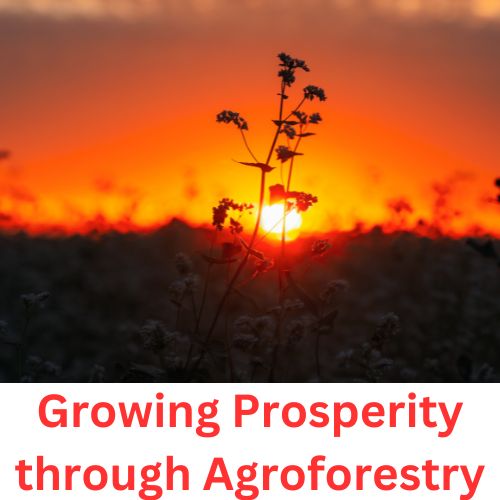Agroforestry, the practice of integrating trees and crops on the same piece of land, is gaining prominence in modern agriculture as a sustainable and economically viable solution to various environmental and agricultural challenges. One of the fascinating aspects of agroforestry is “canopy cultivation,” a technique that not only promotes ecological balance but also contributes to the prosperity of farmers and their communities. In this essay, we will explore the concept of canopy cultivation, its benefits, and its potential to shape a more sustainable and prosperous future.
Understanding Canopy Cultivation
Canopy cultivation involves the intentional management and utilization of the uppermost layer of trees in an agroforestry system. This layer, known as the canopy, comprises the crowns of trees and their interconnected branches. Canopy cultivation seeks to harness the benefits of this canopy layer in synergy with the cultivation of crops on the ground. Let’s delve into the key aspects of canopy cultivation:
1. Biodiversity Enhancement:
One of the primary advantages of canopy cultivation is its ability to enhance biodiversity. The canopy layer provides habitat and sustenance for various wildlife species, including birds, insects, and mammals. By promoting biodiversity, canopy cultivation contributes to ecosystem health and resilience.
2. Improved Microclimates:
The presence of trees in the canopy modifies the microclimate of the agroforestry system. It offers shade and protection to crops from extreme weather conditions, such as excessive heat or heavy rainfall. This natural regulation helps in reducing crop stress and enhances overall yield.
3. Nutrient Cycling:
Canopy trees play a crucial role in nutrient cycling. They absorb nutrients from the soil and recycle them through leaf litter and organic matter. This nutrient-rich environment benefits crops by providing essential elements for their growth, reducing the need for synthetic fertilizers.
4. Economic Benefits:
Canopy cultivation has significant economic advantages for farmers. By diversifying their agricultural practices with tree crops in the canopy, farmers can increase their income potential. Trees like coffee, cocoa, and rubber can be grown in the canopy and harvested for sale.
The Prosperity Nexus: Canopy Cultivation and Rural Livelihoods
The connection between canopy cultivation and rural prosperity cannot be overstated. In many parts of the world, particularly in developing countries, agriculture is the backbone of rural economies. Canopy cultivation brings a multitude of benefits to rural communities:
1. Income Generation:
Farmers who adopt canopy cultivation often see a boost in their income. The additional revenue from tree crops grown in the canopy can be a lifeline for rural families, providing funds for education, healthcare, and improved living standards.
2. Enhanced Food Security:
Agroforestry systems with canopy cultivation can improve food security by increasing crop yields and diversifying food sources. This ensures that families have access to a variety of nutritious foods throughout the year.
3. Climate Resilience:
As climate change poses a growing threat to agriculture, canopy cultivation can make rural communities more resilient. The shade provided by canopy trees helps mitigate temperature extremes, and the diversified agroforestry system is less vulnerable to climate-related shocks.
4. Sustainable Resource Management:
Canopy cultivation encourages the sustainable management of natural resources. Farmers are motivated to protect their trees and maintain a healthy environment, as these trees are essential for their income and well-being.
Challenges and Future Directions
While canopy cultivation holds great promise, it is not without challenges. Balancing the needs of crops and trees in the canopy can be complex, and proper management practices are crucial. Additionally, access to resources and knowledge about agroforestry practices must be made available to farmers, especially in remote areas.
Looking ahead, the promotion of canopy cultivation should be a priority in sustainable agriculture initiatives. Governments, NGOs, and agricultural organizations can play a pivotal role in providing support, training, and incentives to encourage more farmers to embrace this approach. Research and development efforts can also lead to the identification of tree species that are well-suited to canopy cultivation in various regions.
Conclusion
In conclusion, canopy cultivation within the framework of agroforestry represents a promising avenue for growing prosperity in rural communities while addressing environmental challenges. By harnessing the benefits of the canopy layer, farmers can enhance biodiversity, improve microclimates, and boost their income. Canopy cultivation not only contributes to individual well-being but also lays the foundation for sustainable and resilient rural economies. As we move forward, it is essential to recognize and promote the potential of canopy cultivation as a tool for sustainable development and agricultural prosperity.

Congratulations !
No Plagiarism Found
